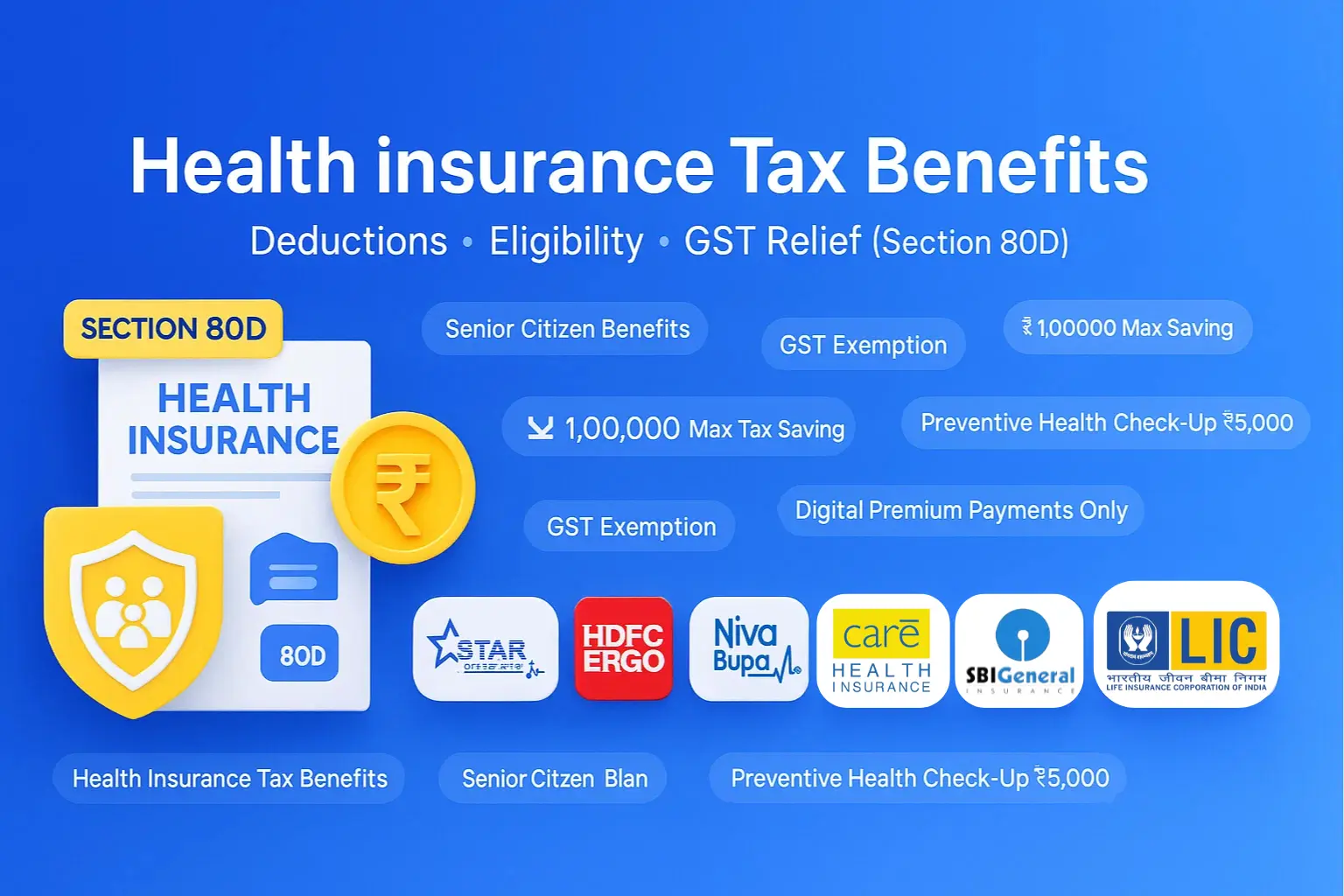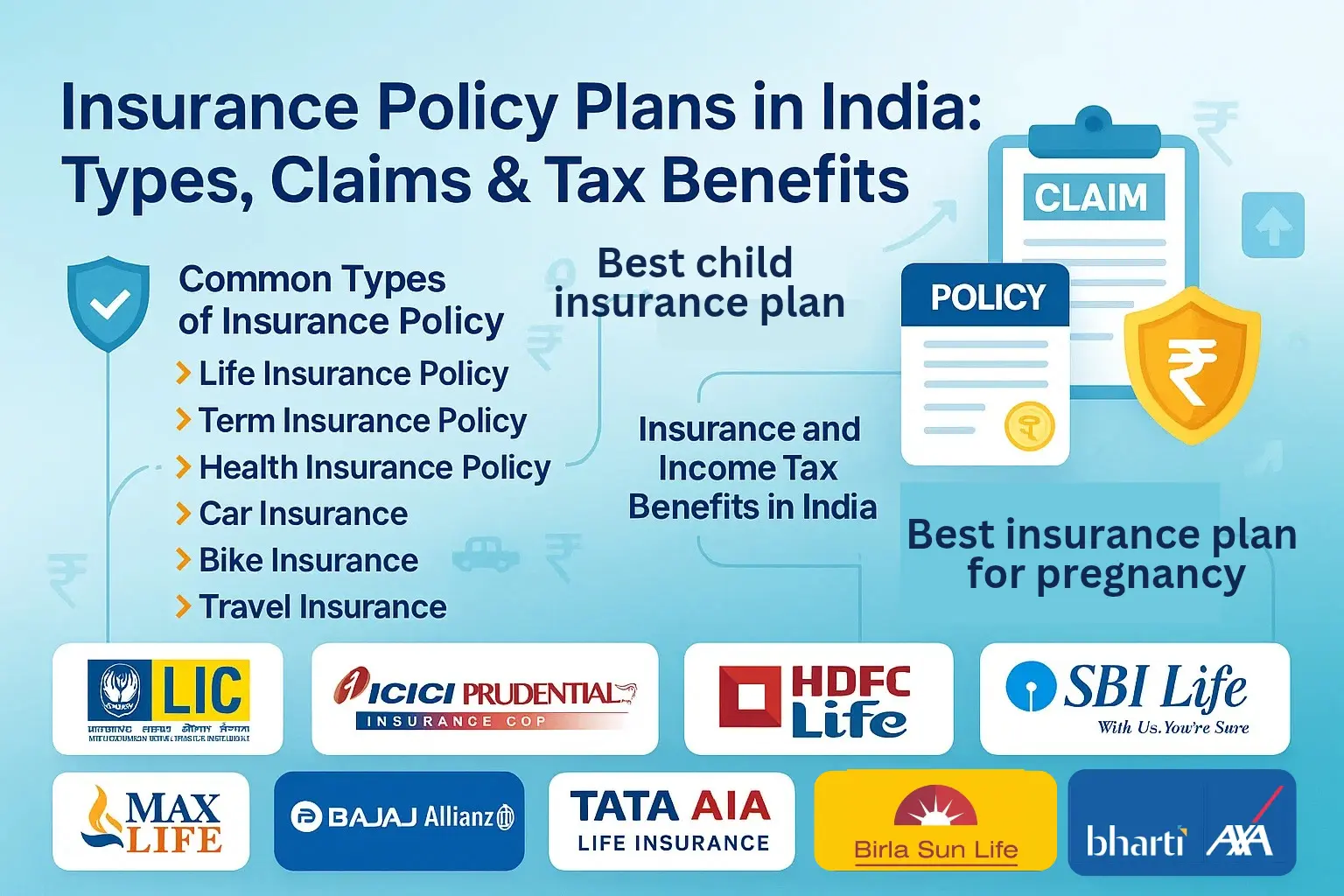Tax-Free Investment for Child: One of the most extremely important investment decisions any parent must make is to plan for their child’s future. Just maintaining funds inside a bank account is insufficient in light of the rapidly rising costs of education and the depreciation of regular savings due to inflation. At this point, picking the best tax-free investment for a child becomes essential. The good news is that India provides a number of trustworthy and safe options that will help you build a solid corpus and save money on taxes.
If you are looking for the best investment plan for your newborn in India, there are many options available to you. There are also long-term strategies available for getting married, going to school, or becoming financially independent. Common options include mutual funds, child investment bonds, and various other government initiatives like Sukanya Samriddhi Yojana and lump sum investment plans, with the goal of providing tax, growth, and protection benefits.
You are able to protect the future of your child and guarantee that they have the best possibilities in life without having to worry about money by starting early with the most suitable tax-free investment.
Why Choose Tax-Free Investment for Child?
Tax-efficient investments allow you to increase your wealth without taking needless deductions. Selecting the best tax-free investment for a child’s education in India for parents entails:
- Higher returns for the same amount invested
- Peace of mind with assured maturity benefits
- Reduced tax burden under Section 80C and Section 10(10D)
- Safe and reliable options regulated by RBI, SEBI, or IRDAI
A child’s PPF account, or Sukanya Samriddhi Yojana, for example, not only allows money to grow tax-free but also fosters financial discipline.
Understanding Tax-Free Investments for Children
“Tax-free investments for children” means investment options where income tax is not levied on the principal amount, interest rate, or maturity period. Since these investments follow the EEE (exempt-exempt-exempt) tax structure, these are highly desirable for long-term wealth creation. The importance of starting early cannot be underestimated. By the time your child turns 30, a ₹10,000 monthly SIP started at the time of their birth can grow to over ₹3 crore, assuming a 12% annual return. This demonstrates the rationale behind parents’ substitution of structured investment strategies for traditional savings accounts.
Best Tax-Free Investment Options for Child in India
India has many different kinds of tax-free investing choices for children that combine tax advantages, development potential, and safety. Parents can create a safe fund for future needs, marriage, and education with the aid of these programs.
Public Provident Fund (PPF) – The Gold Standard
PPF is considered the gold standard when it comes to tax-free investment for children in India, combining safety, guaranteed growth, and complete tax exemption in one plan.
Key Highlights:
- Interest rate: 7.1% p.a. (compounded annually)
- Deposit: ₹500–₹1.5 lakh per year
- Lock-in: 15 years (extendable)
- Triple tax-free benefit – investment, interest, and maturity
Why for Children:
- Account can be opened in a minor’s name
- Operated by parent/guardian till age 18
- Partial withdrawals allowed after 5 years for education
- Safe, guaranteed returns
Example: Investing ₹1.5 lakh annually for 15 years grows to about ₹46 lakh—completely tax-free.
Sukanya Samriddhi Yojana (SSY) – Best Investment for Girl Child
If you want guaranteed returns and safety, Sukanya Samriddhi Yojana (SSY) is both a trusted tax free investment for child and the best investment plan for girl child in India.
Key Highlights:
- Current interest rate: 8.2% per annum
- Investment range: ₹250 to ₹1.5 lakh per year
- Maturity: 21 years from account opening
- Eligible for girls below 10 years of age
Tax Benefits:
- Investment qualifies for Section 80C deduction
- Interest earned is tax-free
- Maturity amount is completely exempt from tax
Impact in Real Life: After 21 years, an annual investment of approximately 1.5 lakh can grow to over ₹63 lakh at currently available interest rates. This makes it a fantastic investment for the costs of marriage and children’s education.
Mutual Fund Investment for Child (via Child Plans)
One of the smartest ways to build long-term wealth while retaining flexibility is through mutual fund investment for child. With dedicated child plans, parents can plan for future needs like higher education or marriage without long lock-ins.
Key Highlights:
- Choose from equity, debt, or hybrid funds based on risk appetite
- Start a SIP (Systematic Investment Plan) from as low as ₹500 per month
- Option to invest a lump sum or monthly depending on your child’s goals
- Potential to generate higher inflation-beating returns over the long term
- Dedicated child plans available to align investments with education and future needs
Tax Benefits:
- ELSS mutual funds qualify for Section 80C deduction (up to ₹1.5 lakh per year).
- Long-term capital gains (LTCG) up to ₹1 lakh per year are tax-exempt.
- Debt funds held long-term may enjoy indexation benefits
A monthly SIP of ₹5,000 in equity mutual funds, with a 12% annual return, can reach ₹50 lakh in 15 years. As a result, investing in mutual funds for a child is one of the most effective strategies to prepare for education and global prospects.
Child Insurance cum Investment Plans
Child insurance cum investment plans offer both life insurance and disciplined wealth creation for parents who are looking beyond savings. Even in the event of unanticipated circumstances, these plans guarantee that your child’s dreams remain safe.
Key Highlights:
- Dual benefit: Insurance protection + investment returns
- Policy term: Usually 15–25 years, aligned with child’s milestones
- Premium payment options: Single, limited, or regular pay
- Lump sum or periodic payouts available for education and marriage
Tax Benefits:
- Premiums qualify for deduction under Section 80C.
- Maturity or survival benefits can be tax-free under Section 10(10D).
- Ensures financial security with tax-efficient growth
Real-world impact: Parents can ensure life insurance and build a large corpus for their children by investing ₹50,000 per year for 20 years. Even in the absence of parents, the child’s future aspirations, such as marriage or further education, are supported financially.
Fixed Deposits (FDs) & Investment Bonds for Child
Investment bonds for children & fixed deposits (FDs) are two of the most dependable choices for frugal parents. These securities are appropriate for short- to medium-term objectives since they guarantee capital protection with consistent returns.
Key Highlights:
- Guaranteed returns with minimal risk
- Flexible tenure: 1 year to 10 years (FDs), 5–10 years (bonds)
- Premature withdrawal available in emergencies
- Can be opened in the child’s name with guardian oversight
Tax Benefits:
- Interest from FDs is taxable under the parent’s income slab.
- Certain tax-saving bonds offer deductions under Section 80C.
- Government-backed bonds provide safety with assured payouts.
One-Time vs. Long-Term Investment Plans
Depending on your financial situation, you can choose between a long-term SIP and a one-time investment plan for your child. If they are in line with your objectives, both choices can safeguard your child’s future.
One-Time Investment Plans
An LIC/SBI child plan or the best one-time investment plan for a girl child is the best option if you have a lump sum to spare. It guarantees short-term financial security while laying a solid basis for long-term requirements.
- Examples: Best one-time investment plan for a girl child, LIC one-time investment plan for a child, SBI child plan one-time investment
- Suitable for parents with lump sum funds (like a bonus or inheritance)
- Creates immediate financial stability
Long-Term SIP or Recurring Investment Plans
For salaried parents, child investment plans in SBI or HDFC allow steady contributions. The power of compounding makes them one of the best ways to build a strong education and marriage corpus.
- Examples: Child investment plans in SBI, HDFC one-time investment child plan, and ICICI bank child investment plans
- Best for salaried parents to build a corpus gradually
- Compounding benefits over years
How Much Should You Invest for Child Education?
Early planning is essential because education costs are increasing quickly. Parents can create the ideal corpus for future requirements by combining growth-oriented plans with tax-free investments for child options.
- Estimate cost using a child investment calculator
- Example: Higher education in India can cost ₹25–50 lakhs in 15 years.
- Use SIPs or one-time investments depending on financial ability
- Consider inflation at 8–10% annually while planning.
What Kind of Investment Can Be Made for a Child?
PPF and Sukanya Samriddhi Yojana are two tax-free child investment options that parents can use to protect their children’s future. For long-term growth, they can also research insurance policies and mutual funds.
- Government Schemes: SSY, PPF, NSC
- Bank Child Plans: SBI, HDFC, ICICI, Axis
- Insurance and Investment: LIC child policies
- Market-Linked: Mutual funds,
- ETFs Alternative: Gold ETFs, Sovereign Gold Bonds
Benefits of Tax-Free Investment for Child
A well-chosen tax-free investment for a child not only provides a solid financial method but also allows parents to save more efficiently. These plans aim to achieve long-term objectives by combining growth, safety, and tax efficiency.
- Tax Cost-effectiveness: Complete exemption from Section 80C and upon maturity
- Consistent Growth: Compounding causes modest investments to increase dramatically.
- Security concerns: Your savings are protected by secure government-backed programs.
- Customization is possible with both SIPs and one-time choices.
- Target-oriented: Ideal for long-term milestones, marriage, and schooling
Tax-free child investments guarantee that your money works harder while protecting your child’s future, offering the dual benefits of savings and security.
Investment Mistakes to Avoid in Tax-Free Investment for Child
When preparing for their child’s future financial investments, many parents make common mistakes such as putting off saving, depending solely on FDs, or failing to account for inflation. These errors can be costly and have a significant effect on the child’s future. Stable growth and financial security are guaranteed when these blunders are avoided and balanced, tax-free investment options are selected for kids. Therefore, when making plans for your child’s future investment, steer clear of these blunders.
- Relying on just one type of investment → Putting all the money in FDs or insurance can limit growth, which is not the right investment strategy for your child’s future.
- Ignoring inflation→ Not accounting for 8-10% annual inflation may be insufficient for future goals, so account for everything.
- Not estimating education/marriage costs → Lack of planning can lead to a loss-making deal, and over time you may have to face a lot of difficulties.
- Ignoring tax benefits → Not availing section 80C or 10(10D) exemptions reduces returns, so avoid ignoring these while investing.
- Choosing short-term gains over long-term goals → Sacrificing compounding gains for instant cash is one of the wrong strategies, so avoid it.
Parents can choose better tax-free investment options for their children by recognizing and avoiding these blunders. A well-thought-out, multifaceted strategy guarantees consistent growth, optimizes profits, and safeguards your child’s future academic and personal objectives.
FAQs on Tax Free Investment for Child
Which investment is 100% tax-free?
Public Provident Fund (PPF) and Sukanya Samriddhi Yojana (SSY) are two examples of government-backed options that are totally tax-free. This means that your investments, interest, and maturity amount are all tax-free.
Which investment is best for a child?
Sukanya Samriddhi Yojana (SSY) and Public Provident Fund (PPF) are the best investments for girls’ education, as they guarantee growth and security. If you want higher returns and don’t mind market risk, then mutual fund SIPs are also a great option. They give you better returns than any other type of investment.
How do you open a SIP for kids?
You can open a minor investment account through banks like SBI, HDFC, ICICI, etc. Use the guardian’s PAN and a relationship proof (e.g., birth certificate). The minor’s PAN is optional.
Can kids invest in stocks in India?
Yes, young kids can invest through minor demat and trading accounts, but they need to be opened and managed by a parent or legal guardian until they are 18 years old.
Where to invest a lump sum for a child?
Lump-sum investments can go into LIC one-time child plans, SBI one-time child investment plans, or into a diversified mutual fund portfolio for balanced growth.
Which government bond is tax-free?
Tax-free bonds issued by government entities like NHAI, PFC, and IRFC offer fixed interest income that’s exempt under Section 10(15).
What is the best way to invest money to avoid taxes?
Leverage instruments under Section 80C—PPF, SSY, ELSS mutual funds, and life insurance policies—all offer substantial tax savings.
How to invest ₹20,000 for a child?
You could start an SIP in mutual funds or invest in PPF or SSY. If it’s for short-term needs, consider bank or recurring deposits.
Is there a way to avoid Net Investment Income Tax?
This term has a U.S. focus. The equivalent in India is to completely avoid filing taxes by investing in tax-free products like PPF or SSY.
Conclusion
One of the best financial investment options parents can make for their child is to choose the best tax-free investment options. The secret is to start early and maintain consistency, whether you are doing SIPs in mutual funds for the long term or lump sum plans with SBI or LIC. For long-term purposes, market-linked investments like mutual funds can offer higher returns, but government schemes like SSY and PPF offer security. Whether you are planning for their education, marriage, or looking at future stability, start investing now to give your child the financial foundation they deserve. So that you can have a worry-free future.




















